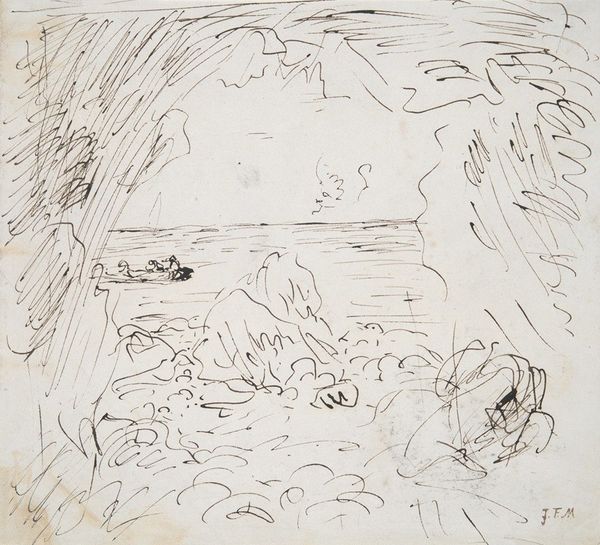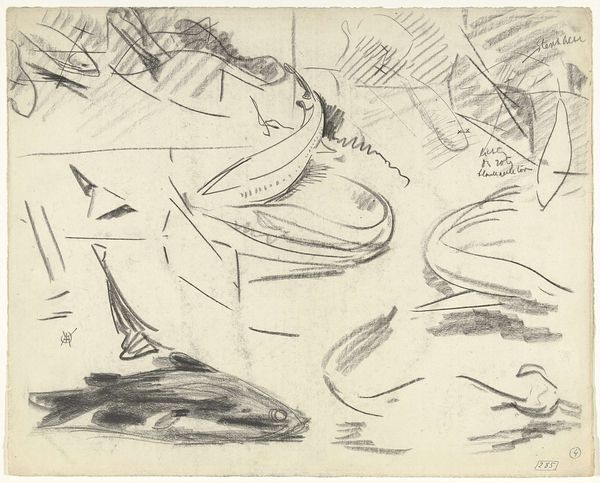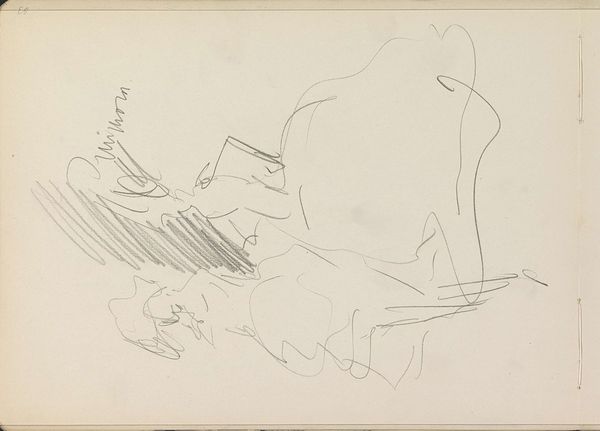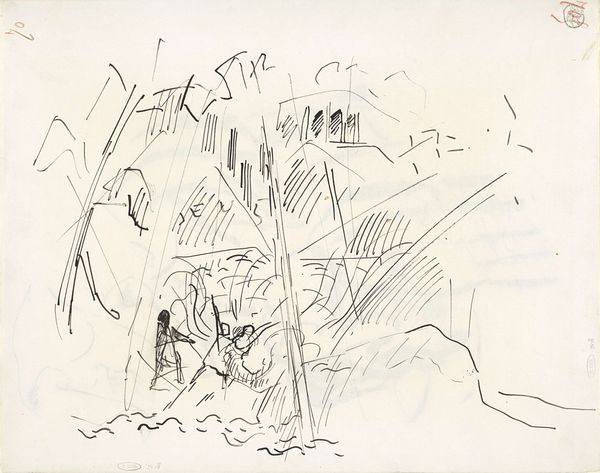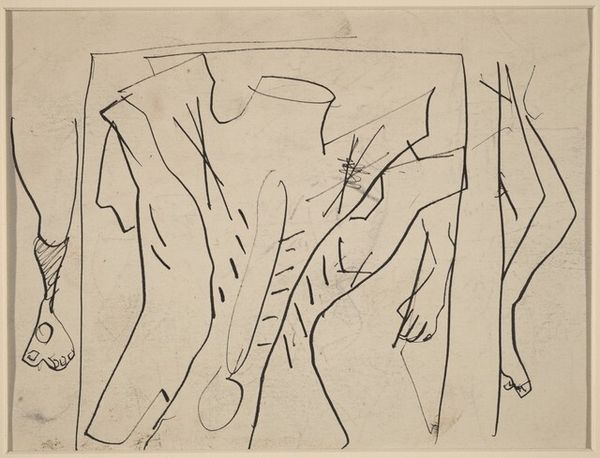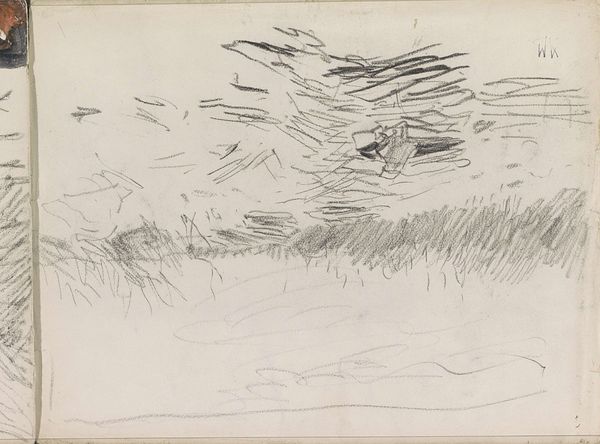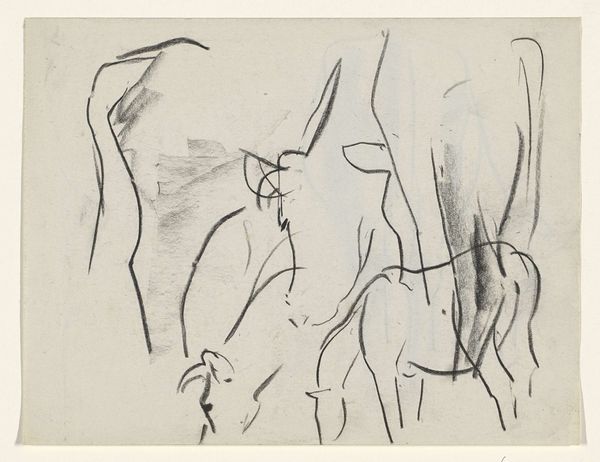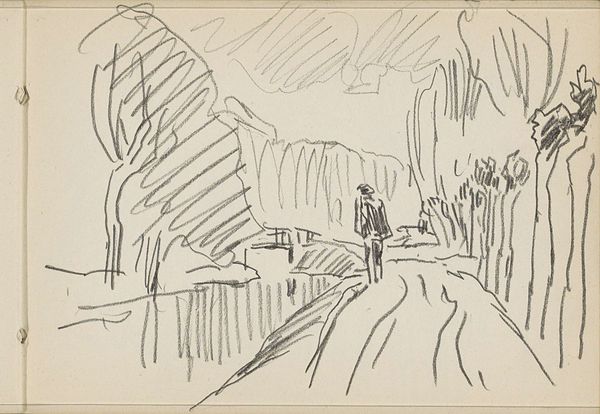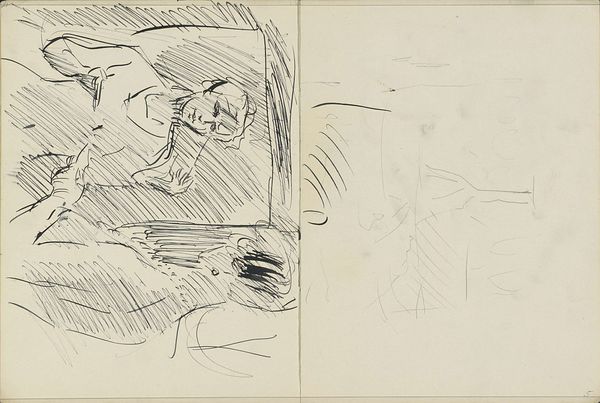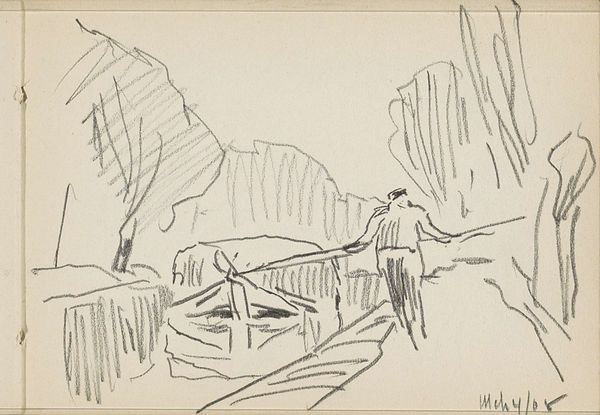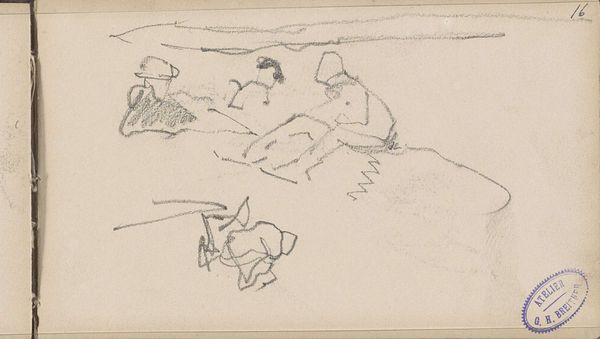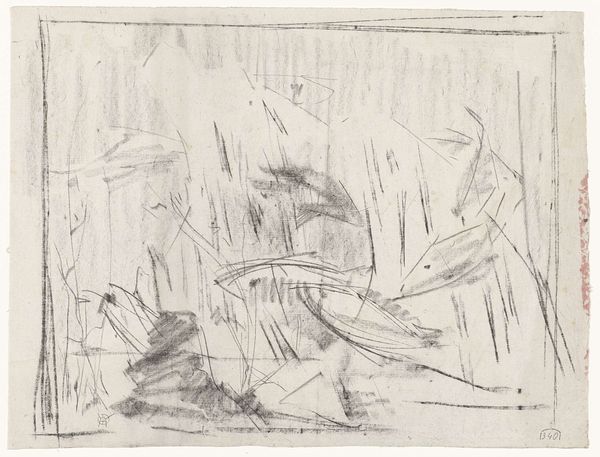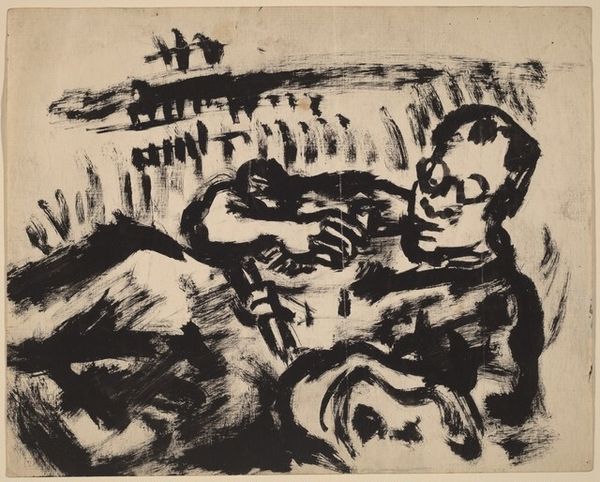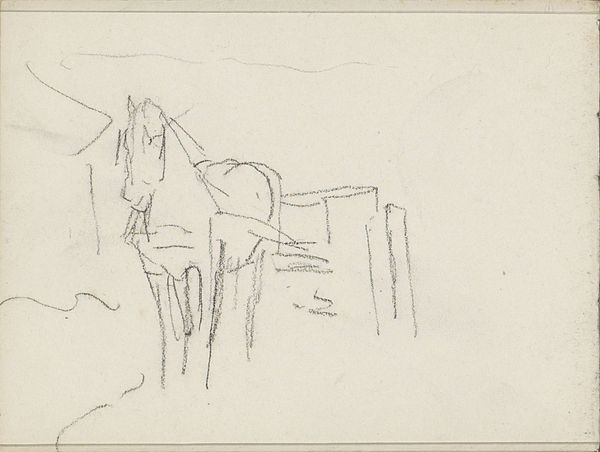
Dimensions: 109 × 155 mm
Copyright: Public Domain
Curator: Jean-François Millet, most known for his paintings of rural life, created this small pen and ink drawing, "Landscape with Cattle," sometime between 1866 and 1867. It now resides here at the Art Institute of Chicago. Editor: It's a surprisingly airy drawing. A simple landscape populated by vague bovine shapes. There’s a kind of restless energy in it, all those quickly scribbled lines suggesting movement and a somewhat unsettled mood. Curator: Absolutely. Despite its modest size, it really does evoke that wide open feeling of the French countryside, and his commitment to showing the life of ordinary people shines through. Even in what could be a simple landscape. I am curious about your comment about the mood of unsettlement? Editor: Well, Millet often focused on the back-breaking toil of rural life, the constant struggle against nature. Perhaps here, that feeling lingers in the brisk, almost frantic linework. Are these animals content? Or are they searching, driven by the constraints of the land? We should also address the absence of the shepherd! What’s the historical context surrounding land enclosure and the socio-economic changes pushing peasants off the land? Curator: You’re nudging at the tension within the Realist movement itself – celebrating the natural world and the nobility of work, while simultaneously documenting labor and economic hardships, sometimes within the same frame. Even this landscape itself isn't pristine; we can feel the pressures of work and animal husbandry in those sketchy hills, almost a foreshadowing of contemporary challenges related to sustainability, consumption and commodification. And the way that ink bleeds just a bit into the paper…it speaks to a vulnerability in the environment itself. Maybe I’m just projecting? Editor: Maybe. But consider this projection as a mirror reflecting larger anxieties surrounding the relationship between humanity and nature. The immediacy of drawing also captures a particular kind of observation—that which is rooted in fleeting experiences. What we are seeing may simply be a moment, the essence of a relationship between animals and environment, not some constructed historical analysis, but a lived encounter. Curator: Which might be a useful caution against reading any single narrative into the work... Millet's own lived encounter is now filtered through layers of time, interpretation, and changing world events. Editor: Precisely, making us more acutely aware of art as a process involving mutual co-creation. "Landscape with Cattle" doesn't just represent; it invites us to connect these scattered strokes of ink, constructing meaning within an ever-shifting landscape.
Comments
No comments
Be the first to comment and join the conversation on the ultimate creative platform.
